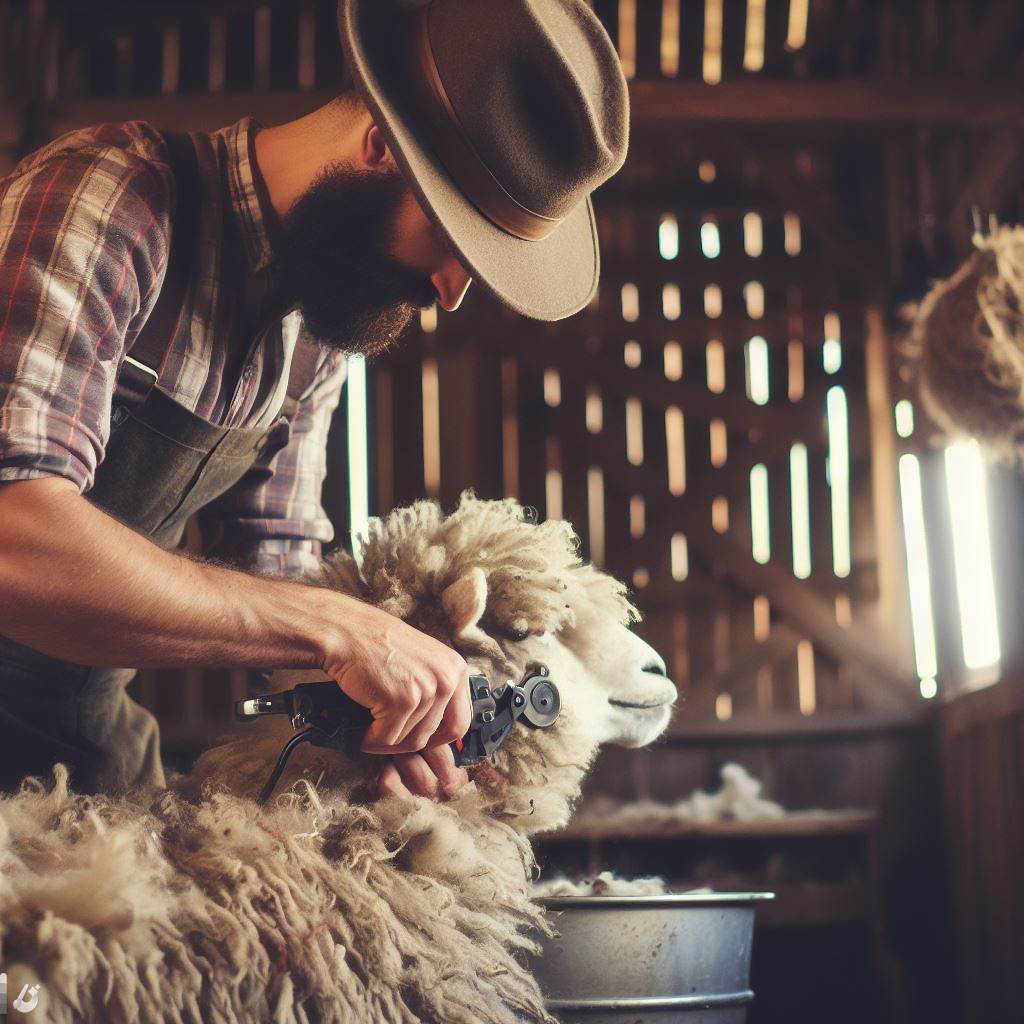Introduction
Let’s explore few tips for healthy cattle rearing.
Cattle rearing is a crucial aspect of the agricultural industry, providing a vital source of food and income.
In order to ensure the well-being of cattle and maximize productivity, it is essential to prioritize their health.
By implementing five key tips, cattle farmers can guarantee healthy rearing practices.
Thesis statement
“In order to ensure healthy cattle rearing, it is essential to implement these 5 tips.”
- Regular veterinary check-ups are crucial for maintaining optimal cattle health.
- Providing a balanced diet consisting of fresh forage, minerals, and supplements is essential.
- Regular exercise and access to clean and spacious living environments promote the overall well-being of cattle.
- Implementing a proper vaccination program is vital to prevent the outbreak of diseases.
- Effective management practices, including proper hygiene and timely identification and treatment of health issues, are crucial.
In essence, prioritizing the health of cattle is of utmost importance in the rearing process.
By following these five essential tips, which include regular veterinary care, a balanced diet, ample exercise, vaccinations, and effective management practices, farmers can effectively ensure healthy cattle rearing and maximize productivity.
Implementing these strategies will not only improve the overall well-being of the cattle but also contribute to the success and sustainability of the farming operation.
Tip 1: Provide a Balanced and Nutritious Diet
Explain the importance of a balanced diet for cattle health
Cattle, like any other living beings, require a balanced and nutritious diet to maintain optimal health.
A well-balanced diet ensures that the cattle receive all the necessary nutrients, vitamins, and minerals for growth, reproduction, and overall well-being.
A balanced diet also plays a crucial role in preventing various health issues, such as nutrient deficiencies, metabolic disorders, and weakened immune systems.
The key components of a nutritious diet for cattle
A nutritious diet for cattle should consist of various components to meet their specific dietary needs. These key components include:
- Forage: The primary component of a cattle’s diet should be high-quality forage, such as grass, hay, or silage. Forages provide essential fiber and energy that aid in digestion and rumen development.
- Concentrates: Cattle may require additional concentrates to supplement their forage intake, especially when their energy and protein requirements increase. Concentrates can include grains, oilseeds, protein-rich supplements, and mineral mixes.
- Water: Access to clean and fresh water is crucial for cattle health. Water plays a vital role in digestion, nutrient absorption, temperature regulation, and overall hydration.
- Minerals and Vitamins: Cattle require a balanced supply of essential minerals, such as calcium, phosphorus, magnesium, and trace minerals like zinc and copper. Adequate vitamin supplementation, particularly vitamins A, D, and E, is also necessary for their overall well-being.
Provide tips on how to create a balanced diet plan for cattle
To create a balanced diet plan for cattle, consider the following tips:
- Assess Nutritional Requirements: Determine the specific nutritional requirements of your cattle based on their age, weight, breed, and production stage. Consult with a veterinarian or animal nutritionist to ensure accurate assessment.
- Analyze Forage Quality: Conduct regular forage testing to assess its nutrient content, including protein, energy, and mineral levels. This helps determine the necessary concentrate supplementation for a well-balanced diet.
- Provide Adequate Forage: Ensure that cattle have access to sufficient amounts of high-quality forage to meet their dietary fiber and energy needs. Monitor forage availability and adjust accordingly, especially during the dry seasons.
- Balancing Concentrate Levels: Calculate the appropriate levels of concentrate supplementation based on the forage analysis and nutritional requirements of your cattle. This ensures they receive the necessary protein and energy without overfeeding or causing imbalances.
- Ensure Water Availability: Provide clean and easily accessible water sources for cattle at all times. Monitor water quality regularly and ensure adequate water intake to prevent dehydration.
- Consistent Feeding Schedule: Stick to a consistent feeding schedule to establish a routine for the cattle. Regular feeding promotes good digestive health and prevents overeating or undernourishment.
- Monitor and Adjust: Regularly monitor your cattle’s body condition, weight, and overall health. Adjust the diet plan as necessary to maintain optimal body condition and prevent any dietary deficiencies or excesses.
By providing a balanced and nutritious diet for your cattle, you can promote their overall health, prevent health issues, and support their growth and productivity.
Remember to consult with experts and regularly assess your cattle’s dietary needs to ensure an optimal diet plan.
Transform Your Agribusiness
Unlock your farm's potential with expert advice tailored to your needs. Get actionable steps that drive real results.
Get StartedRead: Agri Solar Panels: Powering Farms Sustainably
Tip 2: Regular Veterinary Care and Vaccinations
The significance of regular veterinary care
- Regular veterinary care is vital for the overall health and well-being of cattle.
- It helps detect and prevent diseases, ensuring a healthy and productive herd.
- Veterinarians perform routine check-ups, assess body conditions, and identify any potential issues early on.
- They also provide guidance on proper nutrition, hygiene, and breeding practices.
- Regular veterinary care improves the overall quality and profitability of cattle rearing.
The importance of vaccinations in preventing diseases
- Vaccinations play a crucial role in safeguarding cattle from various infectious diseases.
- They stimulate the immune system to produce antibodies that fight against specific pathogens.
- Vaccines protect cattle from illnesses such as respiratory infections, clostridial diseases, and reproductive diseases.
- By preventing diseases, vaccinations reduce the need for expensive treatments and minimize production losses.
- They also contribute to the overall welfare of the animals, preventing suffering and discomfort.
Provide a list of essential vaccinations for cattle and when they should be administered
1. Clostridial Vaccinations
- Administered to prevent diseases like blackleg, tetanus, and malignant edema.
- Initial vaccination should take place when calves are around 2-4 months old.
- Booster shots are necessary every 4-6 weeks until 1 year of age.
2. Respiratory Vaccinations
- Protect against diseases such as bovine respiratory syncytial virus (BRSV) and infectious bovine rhinotracheitis (IBR).
- First vaccination should be given around 2-3 months of age.
- Boosters are typically administered every 4-6 weeks.
3. Reproductive Vaccinations
- Essential for maintaining reproductive health and preventing reproductive disorders.
- Cattle should receive vaccinations for diseases like bovine viral diarrhea (BVD) and leptospirosis.
- Timing of vaccinations depends on the specific reproductive cycle of the herd.
4. Bovine Coronavirus and Rotavirus Vaccinations
- These vaccinations protect against diseases that cause diarrhea and gastrointestinal issues in cattle.
- Calves usually receive the first vaccination at 2-7 days of age, with boosters every 2-4 weeks.
Regular veterinary care and vaccinations are essential for a successful cattle rearing operation.
They ensure the well-being of the animals, prevent disease outbreaks, and contribute to a sustainable and profitable business.
Read: Sustainable Tech in Agriculture: A New Era
Tip 3: Proper Shelter and Comfortable Environment
Proper shelter and a comfortable environment are essential for maintaining the health of cattle.
Cattle are large animals that need a safe and secure place to live, protect them from extreme weather conditions, and provide them with a comfortable space to rest and move around.
Why is a suitable shelter crucial for cattle health?
A suitable shelter is crucial for cattle health because it provides protection from harsh weather elements such as rain, snow, extreme temperatures, and strong winds.
It helps prevent diseases and keeps the animals safe and comfortable.
Moreover, a proper shelter also reduces stress in cattle, which can have negative impacts on their overall health.
When cattle are exposed to stressful environments, their immune systems weaken, making them more susceptible to diseases and illnesses.
In addition, a suitable shelter minimizes the risk of injuries and accidents. Cattle have sensitive skin and can easily get sunburned or injured by sharp objects.
A well-designed shelter protects them from such hazards, ensuring their physical well-being.
The importance of providing adequate space for cattle
Providing adequate space is crucial for the well-being of cattle.
Cattle are social animals that need enough space to move around, exercise, and interact with other herd members.
Lack of space can lead to various health and behavioral problems.
Crowded conditions can cause stress, aggression, and the spread of diseases.
Cattle kept in cramped spaces are more likely to injure themselves or each other, as they cannot establish their social hierarchy or escape dominant individuals.
Inadequate space also limits the opportunity for exercise, which is essential for cattle’s physical development and muscle tone.
Exercise helps prevent obesity, improves circulation, and keeps the animals fit and healthy.
Moreover, it reduces boredom and behavioral issues like destructive chewing or cribbing.
Tips on how to create a comfortable environment for cattle
Creating a comfortable environment for cattle ensures their overall well-being and enhances their productivity. Here are some tips:
- Provide adequate bedding: Use clean and comfortable bedding materials such as straw or sawdust to keep cattle warm and provide cushioning for their bodies.
- Maintain good ventilation: Ensure proper air circulation in the shelter to minimize humidity, ammonia buildup, and respiratory issues.
- Implement proper drainage: Prevent the accumulation of water and mud by designing the shelter with proper drainage systems.
- Offer access to clean water: Ensure a constant supply of fresh and clean water for cattle to drink, encouraging proper hydration.
- Control temperature: Implement appropriate cooling or heating systems to maintain a stable and comfortable temperature in the shelter.
- Allow natural light: Natural light is important for cattle’s well-being, so design the shelter with windows or skylights to let sunlight in.
- Minimize noise and disturbances: Avoid loud noises, excessive human activity, or sudden changes that can stress the cattle.
By following these tips, cattle owners can provide a suitable shelter and a comfortable environment that promotes the health and well-being of their animals.
Investing in proper housing and creating a stress-free environment leads to happier, healthier, and more productive cattle.

Tip 4: Regular Exercise and Pasture Management
Stress the importance of regular exercise for cattle
Regular exercise plays a crucial role in maintaining the overall health and well-being of cattle.
Showcase Your Farming Business
Publish your professional farming services profile on our blog for a one-time fee of $200 and reach a dedicated audience of farmers and agribusiness owners.
Publish Your ProfileExercise helps to keep their muscles strong, promotes proper digestion, and improves blood circulation.
Not only does exercise prevent obesity and related health issues, but it also reduces stress in cattle.
The benefits of pasture management for cattle health
Pasture management is essential for providing cattle with a healthy and nutritious environment to graze in.
Proper pasture management ensures that cattle have access to a diverse range of plants and grasses,
which supply them with essential nutrients to support their growth and development.
A well-managed pasture also helps to minimize the risk of diseases and parasites in cattle.
Provide tips on how to promote exercise and maintain a healthy pasture
- Encourage movement: Design the cattle’s living space in a way that encourages them to move around.
- Provide space for grazing: Allocate adequate pasture space per animal to allow free movement and grazing.
- Rotation grazing: Implement a rotational grazing system to ensure even utilization of pasture and prevent overgrazing.
- Regular exercise routines: Develop exercise routines such as daily walks or allowing cattle to roam freely for a certain period.
- Provide enrichment activities: Install toys, scratching posts, or other forms of stimulation to encourage natural movement.
- Monitor pasture health: Regularly inspect the pasture for grass quality and growth, and address any issues promptly.
- Fertilize and reseed: Practice proper fertilization and reseeding techniques to maintain a healthy pasture with lush vegetation.
- Water supply: Ensure that there are clean and accessible water sources throughout the pasture to keep cattle hydrated.
- Controlling parasites: Implement effective parasite control measures, such as regular deworming, to prevent health issues in cattle.
- Regular pasture maintenance: Trim overgrown grass, remove weeds, and address drainage issues to maintain a healthy pasture.
By prioritizing regular exercise and proper pasture management, cattle owners can ensure the health and vitality of their livestock.
Read: Climate-Smart Agri: Tech Against Climate Change
Tip 5: Disease Prevention and Biosecurity Measures
Importance of Disease Prevention in Cattle Rearing
- Minimizing the occurrence of diseases is crucial for maintaining a healthy cattle population.
- Disease outbreaks can result in economic loss, decreased productivity, and even death of the animals.
- Preventive measures help reduce the need for expensive treatments and promote animal welfare.
- By preventing diseases, cattle farmers can ensure a sustainable and profitable business in the long run.
Understanding Biosecurity and Its Implications for Cattle Health
- Biosecurity refers to practices that prevent the introduction and spread of infectious diseases.
- It involves controlling the movement of people, animals, equipment, and vehicles to minimize disease transmission.
- Biosecurity measures also include maintaining clean and hygienic conditions within the farm premises.
- Proper biosecurity reduces the risk of diseases entering the farm and spreading among the cattle.
- It helps protect not only the herd but also neighboring farms and the overall livestock industry.
Tips for Implementing Effective Disease Prevention and Biosecurity Measures
- Develop a herd health management plan in consultation with a veterinarian to address specific risks.
- Ensure all incoming animals undergo proper quarantine to prevent the introduction of infectious diseases.
- Regularly monitor and assess the health status of the cattle through physical examinations and diagnostic tests.
- Maintain a clean and sanitized environment by regularly disinfecting equipment, housing, and feeding areas.
- Control pests like flies and rodents, as they can transmit diseases to the cattle.
- Minimize visitors to the farm and restrict access to specific areas to prevent disease spread.
- Implement proper waste management strategies to minimize disease-causing organisms’ survival and spread.
- Follow vaccination schedules recommended by veterinarians to protect the cattle against common diseases.
- Promote good nutrition and provide a balanced diet to enhance the immune system and overall health.
- Practice proper hygiene, such as washing hands thoroughly and using personal protective equipment, when handling cattle.
With the implementation of effective disease prevention and biosecurity measures, cattle farmers can significantly reduce the risk of diseases affecting their herds.
By prioritizing prevention, they can avoid the negative consequences associated with disease outbreaks and maintain a healthy and productive cattle population.
Remember, prevention is always better than cure when it comes to ensuring the well-being and profitability of cattle rearing businesses.
Read: Livestock Tech: Innovations in Animal Farming
Conclusion
Recap the 5 essential tips for healthy cattle rearing
To ensure healthy cattle rearing, it is important to:
- Provide a balanced and nutritious diet.
- Maintain a clean and hygienic living environment.
- Regularly monitor and manage their health and welfare.
- Implement proper vaccination and parasite control measures.
- Give them plenty of access to clean water and fresh air.
Reinforce the importance of implementing these tips for successful cattle rearing
By following these essential tips, cattle owners can ensure the overall well-being and productivity of their animals.
Encourage readers to prioritize the health and well-being of their cattle through these practices
Taking care of cattle’s health is not only ethical but also crucial for preserving profitability in cattle rearing operations.
By prioritizing their health, we can enhance their quality of life and improve the success of our operations.
Remember, healthy cattle lead to a prosperous future!




